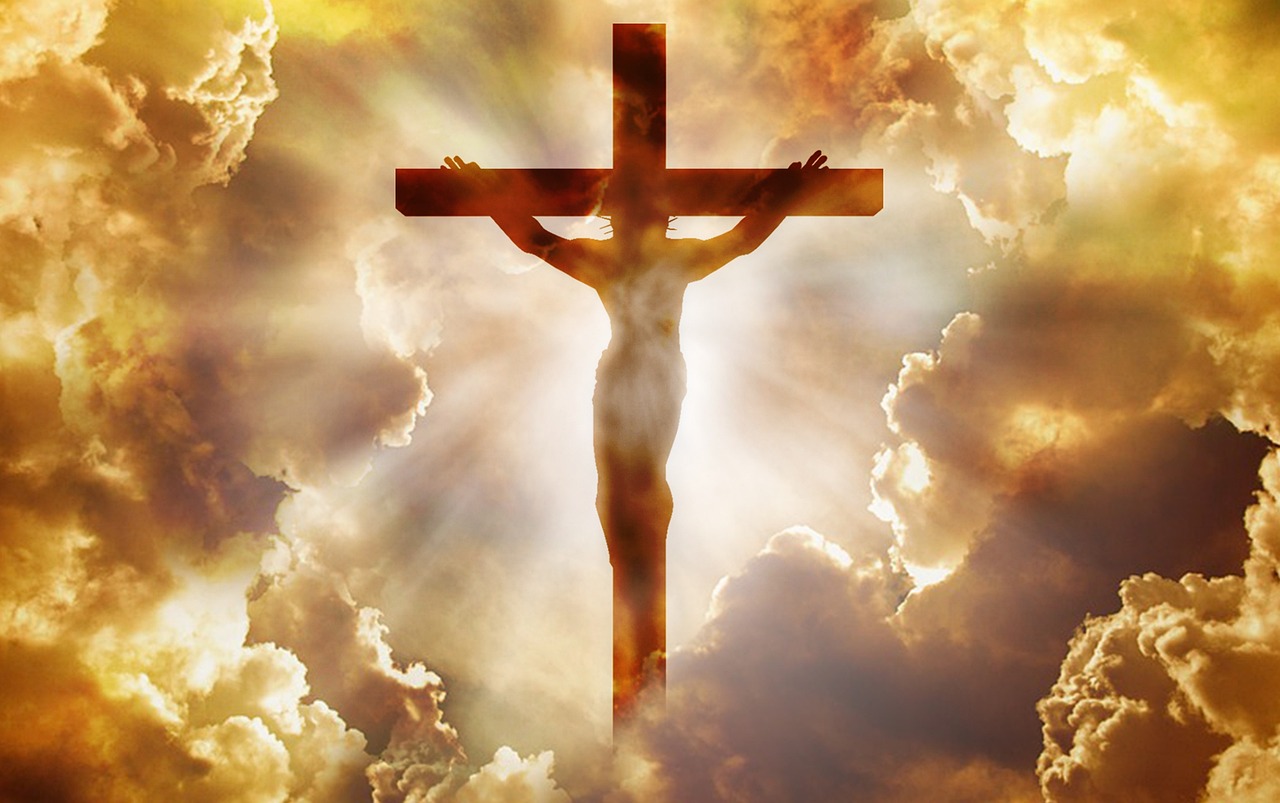Introduction
Leviticus 3 plays a significant role in the connection between Jesus as the Messiah and Messianic prophecies in the Old Testament. This article will explore the importance of Leviticus 3 in relation to Jesus and highlight the concept of the Peace Offering mentioned in this chapter. The Peace Offering symbolizes the fellowship and peace between the worshiper and God, which finds its ultimate fulfillment in Jesus as the ultimate sacrifice for humanity’s sins.
Leviticus 3 is a chapter in the Bible that describes the Peace Offering, also known as the “fellowship offering.” This offering involved the sacrifice of an ox, lamb, or goat. The blood of the animal was sprinkled on the altar, and certain parts of the sacrifice were burned. The worshiper was allowed to eat the remaining portion of the sacrifice, symbolizing the fellowship between God and the worshiper.
The Peace Offering represents the peace that exists between the worshiper and God because of atonement. It is not an attempt to obtain peace but rather a celebration of the peace that already exists. The offering symbolizes the fellowship between God and the sinner based on blood sacrifices. In Leviticus, the worshiper is invited to partake in this fellowship through the Peace Offering.
Overview of Leviticus 3 in the Bible
Leviticus 3 provides specific instructions for the Peace Offering, which was one of the offerings made by the Israelites to worship and commune with God. The Peace Offering was a voluntary offering that could be presented for various occasions, such as thanksgiving, fulfillment of a vow, or as a freewill offering. Unlike other offerings, the Peace Offering was unique in that it involved both the worshiper and God partaking in a communal meal, symbolizing fellowship and peace.
The offering could be presented using different types of animals, including a male or female ox, sheep, or goat. The worshiper would bring the animal to the entrance of the tabernacle, lay their hands on its head, and slaughter it. The priest would then sprinkle the blood on the altar, and certain portions of the animal, such as the fat, kidneys, and liver, would be offered as a burnt offering to God. The remaining meat would be shared between the priest and the worshiper, who would eat it in a joyous meal as a symbol of their fellowship with God.
The Peace Offering is significant because it represents the restoration of the relationship between God and humanity. It emphasizes the importance of atonement and the need for reconciliation with God. The offering serves as a reminder that true peace and fellowship can be attained through the shedding of blood, foreshadowing the ultimate sacrifice of Jesus Christ.
Messianic Prophecies in the Old Testament
Messianic prophecies are predictions found in the Old Testament that point to the coming of the Messiah, Jesus. These prophecies serve as evidence of Jesus’ identity as the Messiah. The Old Testament is filled with various Messianic prophecies that find fulfillment in Jesus.
One prominent Messianic prophecy is found in Isaiah 9:6, which states, “For to us a child is born, to us a son is given; and the government shall be upon his shoulder, and his name shall be called Wonderful Counselor, Mighty God, Everlasting Father, Prince of Peace.” This prophecy highlights the divine nature of the Messiah and His role as the bringer of peace.
Another significant prophecy is found in Micah 5:2, which declares, “But you, O Bethlehem Ephrathah, who are too little to be among the clans of Judah, from you shall come forth for me one who is to be ruler in Israel, whose coming forth is from of old, from ancient days.” This prophecy specifically identifies the birthplace of the Messiah as Bethlehem, further validating Jesus’ fulfillment of this prophecy.
The Messianic prophecies in the Old Testament provide a foundation for the belief in Jesus as the long-awaited Messiah. They demonstrate the divine plan and purpose that God had for humanity’s salvation and redemption. These prophecies are essential in establishing Jesus’ credibility and affirming His role as the Savior of the world.
The Significance of Leviticus 3 in the Context of the Old Testament
Leviticus is a book within the Old Testament that serves as a guide for the Israelites on matters of laws and rituals. It provides instructions for the sacrificial system and other religious practices. Leviticus 3 specifically fits into this system by detailing the Peace Offering or the fellowship offering.
The Peace Offering in Leviticus 3 reinforces the relationship between God and His people. It symbolizes the peace and fellowship that can be obtained through atonement. The offering serves as a reminder of the need for reconciliation between God and humanity and the restoration of their relationship.
Leviticus 3 is part of a larger framework of offerings and sacrifices outlined in the book of Leviticus. These offerings were intended to provide a means for the Israelites to approach God, seek forgiveness for their sins, and maintain a right relationship with Him. The Peace Offering, in particular, served as a way for the worshiper to express their gratitude and devotion to God, acknowledging His faithfulness and provision.
The Peace Offering also served as a way to celebrate and commemorate special occasions. It provided an opportunity for the community to come together and share in the blessings and provisions of God. Through this offering, the Israelites were reminded of their dependence on God and the importance of unity and fellowship with one another.
The Connection between Leviticus 3 and Jesus
The connection between Leviticus 3 and Jesus is found in the fulfillment of the Peace Offering through His sacrificial death on the cross. Just as the Peace Offering symbolized peace and fellowship between God and the worshiper, Jesus’ sacrifice fulfilled the symbolism and purpose of this offering.
In the New Testament, Jesus is referred to as the Lamb of God who takes away the sins of the world. His sacrificial death on the cross serves as the ultimate Peace Offering, reconciling humanity to God and bringing about true peace and fellowship. Through His shed blood, Jesus became the perfect atoning sacrifice, satisfying the requirements of the law and providing a way for humanity to be restored to a right relationship with God.
Jesus’ role as the ultimate High Priest and Mediator is significant in the context of Leviticus 3. He offered Himself as the perfect sacrifice to reconcile humanity with God. Through His sacrifice, Jesus brought true peace and reconciliation between God and humanity. He became our peace, bridging the gap that sin had created.
By understanding the symbolism and purpose of the Peace Offering in Leviticus 3, we can appreciate the depth of Jesus’ sacrifice on the cross. His death and resurrection fulfilled the foreshadowing seen in the Old Testament, demonstrating God’s plan for salvation and redemption. Jesus’ sacrifice provides the ultimate example of peace and fellowship with God, inviting us to enter into a relationship with Him through faith.
The Symbolism and Theological Implications of Leviticus 3
The Peace Offering in Leviticus 3 holds significant symbolism and theological implications. It represents reconciliation, atonement, and fellowship with God. Through this offering, the worshiper acknowledges their need for reconciliation with God and celebrates the peace and fellowship that can be found through atonement.
The Peace Offering symbolizes the restoration of a broken relationship. It signifies the desire for unity and harmony between God and humanity, emphasizing the importance of atonement for sins committed. The offering points to the need for a sacrificial substitute to bear the punishment for sin and restore fellowship with God.
The act of the worshiper laying their hands on the head of the sacrificial animal symbolizes the transfer of guilt and sin from the worshiper to the innocent substitute. This act acknowledges the worshiper’s recognition of their own sinfulness and their need for a Savior. The blood that is sprinkled on the altar represents the shedding of blood required for atonement and the covering of sin.
The consumption of the sacrificial meat by both the priest and the worshiper reflects the communal aspect of the Peace Offering. It signifies the shared fellowship between God and His people, highlighting the joyous celebration of restored relationship and unity. The meal represents the intimate communion between the worshiper and God, a time of thanksgiving and praise for His faithfulness and grace.
The Peace Offering also points to the ultimate fulfillment of these themes through Jesus’ sacrifice on the cross. Jesus’ death and resurrection provided the perfect atoning sacrifice that satisfied the requirements of the law. Through faith in Jesus, believers can experience true fellowship and peace with God, being reconciled to Him and enjoying the blessings of a restored relationship.
The Fulfillment of Leviticus 3 in Jesus
Jesus fulfills the symbolism and purpose of the Peace Offering in Leviticus 3. Through His sacrificial death, Jesus brought true peace and reconciliation between God and humanity. He became the ultimate Peace Offering and the source of peace with God.
The Apostle Paul speaks of this fulfillment in Ephesians 2:14, stating, “For he himself is our peace, who has made us both one and has broken down in his flesh the dividing wall of hostility.” Jesus’ sacrifice on the cross broke down the barrier of sin that separated humanity from God, offering a way for all people to have peace with Him.
Faith in Jesus is the means through which we obtain peace with God, as emphasized in Leviticus 3. It is through faith in Jesus and His sacrifice that we can experience true fellowship with God. Jesus’ death on the cross paid the penalty for our sins and reconciled us to God, making peace possible.
The writer of Hebrews also confirms the fulfillment of the Peace Offering in Jesus. Hebrews 10:10 states, “And by that will we have been sanctified through the offering of the body of Jesus Christ once for all.” Jesus’ sacrifice was a once-and-for-all offering that accomplished complete forgiveness and reconciliation with God.
Through the Peace Offering of Jesus, believers can have assurance of their salvation and experience the peace that surpasses all understanding. This peace is not dependent on our own efforts or works, but on the finished work of Jesus on the cross. It is a peace that brings wholeness, restoration, and eternal fellowship with God.
Conclusion
In conclusion, Leviticus 3 holds great significance in relation to Jesus as the Messiah and Messianic prophecies in the Old Testament. The Peace Offering described in Leviticus 3 symbolizes the fellowship and peace between the worshiper and God. Jesus fulfills the symbolism and purpose of this offering through His sacrificial death on the cross. Through faith in Jesus, we can obtain peace with God and experience true fellowship with Him. Leviticus 3 foreshadows Jesus’ sacrifice and establishes His role as the Messiah. As we deepen our understanding of the Old Testament and its connection to the New Testament, we can gain a greater appreciation for the significance of Leviticus 3 in relation to Jesus and Messianic prophecies.
#Leviticus3 #PeaceOfferings #SacrificialRituals #BiblicalInterpretation #ReligiousUnderstanding #OldTestament #BiblicalSymbolism #FaithJourney #SpiritualInsights #BiblicalExegesis #DivineWorship #ChristianTheology #SacrificialOfferings #PeaceWithGod

